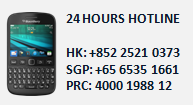USA

California - Ballast Water Management Requirements
There have been ballast water regulations in place for vessels calling at Californian ports from outside state waters since 1 January 2004 pursuant to California's Marine Invasive Species Act.
Effective 22 March 2006 new regulations now require vessels operating within the Pacific Coast Region to follow similar procedures.
The required ballast water management and reporting practices are equivalent for both types of vessels. The distinguishing features are as follows:
| Vessels from Outside EEZ |
Vessels within the Pacific Coast Region
|
| Vessels Type | Vessel Type |
| All vessels over 300 gross registered tons carrying ballast water into the waters of the state after operating outside Exclusive Economic Zone (EEZ), which extends from the baseline of the territorial sea of the United States seaward for 200 nautical miles. | All vessels over 300 gross registered tons operating and carrying ballast water within the Pacific Coast Region* |
| Place for Ballast Water Exchange | Place for Ballast Water Exchange |
| "Mid-Ocean Waters",which means waters that are more than 200 nautical miles from land and at least 2,000 meters (6,560 feet or 1,093 fathoms) deep. | "Near-coastal waters", which means waters that are more than 50 nautical miles from land and at least 200 meters (656 feet, 109 fathoms) deep. |
*Places within the Pacific Coast Region:
a. Ports and places in the San Francisco Bay area east of the Golden Gate bridge including the Ports of Stockton and Sacramento, are considered the same California port or place
b. Ports of Los Angeles, Long Beach and the El Segundo marine terminal shall be considered the same California port or place.
c. The Pacific Coast Region is defined as all coastal waters (within 200 NM of land) on the Pacific Coast of North America east of 154 degrees W longitude (approximately equal to Cooks Inlet, Alaska) and north of 25 degrees N latitude (Baja California, Mexico), exclusive of the Gulf of California.
Ballast Water Management Practices
Vessels to which the regulations apply must adopt a ballast water management practice including:
- Ballast Water Exchange. Exchange means to replace water in tanks using either:
- "Flow through exchange" - overflowing the tank from the top until three volumes of water have been changed.
- "Empty/refill exchange" - pump out, until tank is empty or nearly so, and then refilling the tank with mid-ocean waters.
- Retain ballast on board.
- Discharge of ballast water at the same location where the ballast water originated, provided that the master, operator, or person in charge of the vessel can demonstrate that the ballast water to be discharged was not mixed with ballast water taken on in an area other than mid-ocean waters. "Same location" means an area within one nautical mile (6,000 feet) of the berth or within the recognized breakwater of a California port or place, at which the ballast water to be discharged was loaded.
- Use an alternative, environmentally sound method of ballast water management that, before the vessel begins the voyage, has been approved by the commission or the United States Coast Guard as being at least as effective as exchange, using mid-ocean waters, in removing or killing non-indigenous species.
- Discharge the ballast water to an approved reception facility.
- Under extraordinary circumstances, perform a ballast water exchange within an area agreed to by the commission in consultation with the United States Coast Guard at or before the time of the request.
Mandatory Completion and Submission of Ballast Water Report Form by vessel master, owner, operator, agent, or person in charge of vessel at each port of call in California.Download Document
Ballast Water Report Form (developed by US Coast Guard)
The form may be submitted electronically or in written form to the California State Lands Commission (CSLC).
FAX: 562-499-6444 or
Email: bwform@slc.ca.gov
NOTE: Submission of this form to CSLC does NOT relieve the vessel of the responsibility to report to the US Coast Guard.**
Mandatory Compliance with "Good Housekeeping" Practices
- Avoid uptake or discharge in or near marine sanctuaries, reserves, parks, or coral reefs
- Minimize or avoid uptake in the following areas or circumstances:
- Areas of known infestations or pathogens
- Near sewage outfalls
- Near dredging operations
- Areas with reduced tidal flushing
- In darkness when bottom-dwelling organisms are active
- Where propellers may stir up sediment
- Clean ballast tanks regularly to remove sediment
- Dispose of sediments in accordance with appropriate laws
- Minimize discharge amounts
- Rinse anchors and anchor chains
- Remove fouling organisms from hull, pipes, etc.
- Dispose of any removed substance in accordance with laws
Maintain a Ballast Water Management Plan prepared specifically for vessel. Written document on board, specific for your vessel, describing the procedure for ballast management. It should include safety and exchange procedures. See IMO Resolution A.868 for "Guidelines for the Control and Management of Ship's Ballast Water to Minimize the Transfer of Harmful Aquatic Organisms and Pathogens". Adopted November 1997.
Ballast Water Log outlining ballast water management activities for EACH ballast water tank on board the vessel and shall make the separate ballast water log available for inspection.Training of vessel master, PIC, and crew regarding the application of ballast water and sediment management and treatment procedures
Mandatory Fee Submission to California's Board of Equalization (916-322-1965) Each owner/operator shall pay $400.00 for each qualifying voyage at their first port call in California.
Random Sampling of Vessels for ComplianceCivil and Criminal Penalties for failure to comply include :
$500 fine for failure to report
$5,000 fine for intentional or negligent failure
$5,000 fine for knowingly and with intent to deceive falsifying a ballast water control report form or tampering with or disabling a system for the control of non-indigenous species. This also constitutes a misdemeanor with the prospect of a 1 year prison sentence.
These fines are "per violation" and each day of a continuing violation constitutes a separate violation.
** Steamship website article on U.S. Federal Ballast Water Management Regulations





